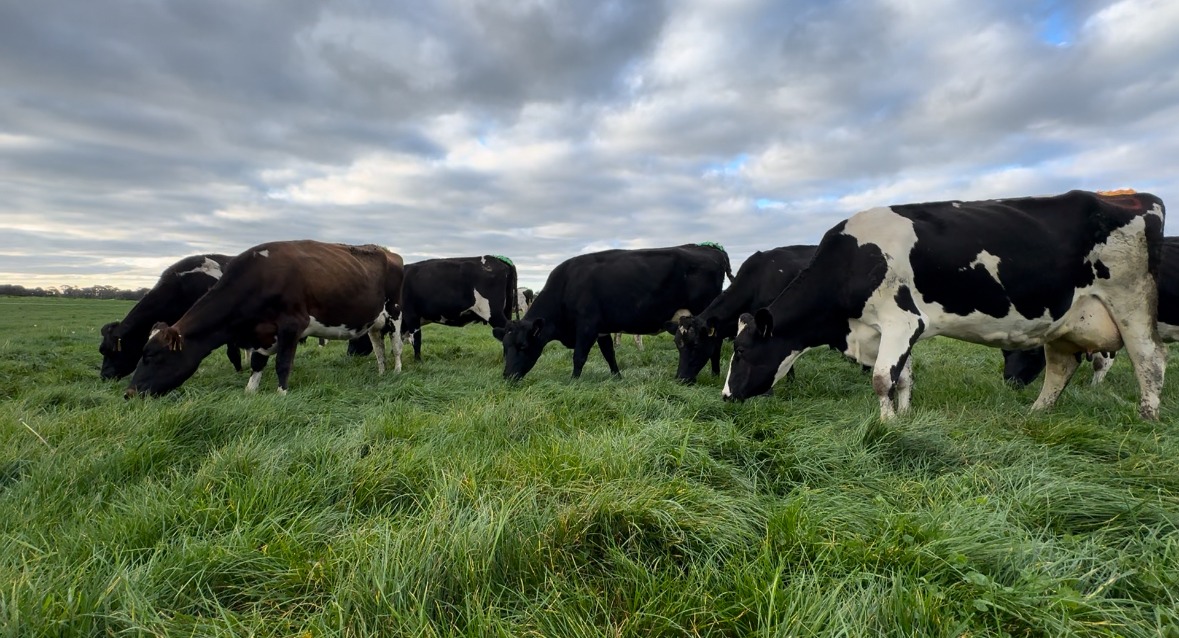GIBBERELLIC ACID: THE FACTS
Minimal Autumn rainfall has resulted in a Winter feed shortage for many farms across the district. Provided there is adequate soil moisture moving forward, urea and gibberellic acid are well proven strategies to increase pasture growth in winter.
What is gibberellic acid?
Gibberellic acids (GA) are growth hormones made naturally in plant roots during Spring in flowering plants. The application of GA in Winter stimulates plant growth and creates an increase in available feed.
How does gibberellic acid work?
GA stimulates growth, resulting in cell elongation in plants, and longer, more upright leaves and stem elongation. Provided pastures have been exposed to winter conditions of short days and cold nights, responses can be expected when applied in winter and autumn.
Initial yellowing of GA treated plants is normal and is due to rapid growth diluting chlorophyll (green pigment) in elongated leaves.
What can I expect after applying gibberellic acid?
GA can strategically be used to increase feed supply, build a feed wedge, fill a feed deficit and reduce supplemental feed costs by extending the grazing period. Greater responses can be expected when day temperatures are colder, responses can also be variable due to variations in soil fertility and N supply.
Research suggests an additional 300-500 kg DM/ha up to four weeks post application, producing low-cost feed @ $56-$94/tonne DM.
Grass species vary in their responses to GA. Phalaris is highly responsive (lower GA application rates). Perennial ryegrass, cocksfoot, prairie grass and kikuyu are also responsive. Ensure pastures are relatively weed free (<5%), as many broadleaf weeds including dock and fat hen are very responsive to GA.
Feed quality is also unaffected by GA application.
Timing of gibberellic acid application
GA should be applied within 1-5 days following grazing, where adequate green leaf area is available for uptake (ideally >1300 kg DM/ha and >70% ground cover). Responses decline considerably when applied beyond 5 days after grazing and GA is not effectively up taken in ungrazed pastures.
With plant reserves mobilised to produce additional growth, it is very important to ensure pasture is not grazed for at least 3-4 weeks for plant reserves to be replenished and allow a good response (e.g. graze ryegrass @ 2 ½ -3 leaves).
Grazing after this period is recommended to avoid rank pastures and decline in pasture quality. Ensure high pasture utilisation/minimal wastage to maximise returns (observe post grazing residuals, targeting 1500 kg DM/ha (5 cm height)).
GA application can be as early as late April (dependant on temp) and no later than mid-August. GA should be applied when air temperature is between 5-15 deg, when natural levels of GA are low.
Gibberellic acid must be applied with adequate nutrients (N,P,K,S) and moisture
Best responses occur in pastures that are not under stress and have adequate moisture and nutrition (N,P,K,S) at time of application to support the extra growth. GA should be used with adequate nitrogen fertiliser and is not a replacement for fertiliser. Growth responses to GA and nitrogen are complementary and result in additional growth.
Availability of N at the time of application has been shown to improve pasture response to GA, and this is a result of increases in both tiller size and density. There is evidence to suggest that successive applications of GA without N fertiliser will reduce tillering in ryegrass, which may lead to reduced pasture production (lag) in future rounds.
Gibberellic acid label recommendations
- GA is compatible with a range of other chemicals
- Use with a non-ionic wetter to improve leaf contact and foliar uptake
- As GA is a natural plant growth regulator, it is animal safe and has no grazing withhold
- Avoid applying to new sown pastures in the first 12 months, as plant root systems are not developed enough to support the increased growth
- Pastures should be grazed prior to application of GA
- Ensure final GA application is no later than mid-August
- Apply at recommended label rates, early trials used much higher rates of GA, leading to some negative effects such as a lag in regrowth after GA use and saw a decline in nutritional value of pastures
- Do not spray if raining or rain likely within 2 hours of spraying to ensure effective absorption onto leaf surface
